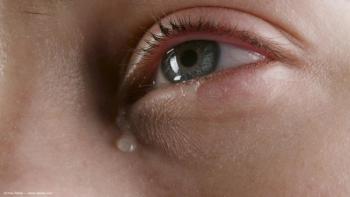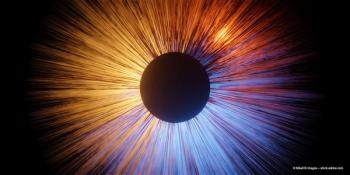
Bioengineered corneas may fulfill unmet need for human donor corneas
The development of a bioengineered cornea may serve to provide corneas to the millions of people worldwide unable to obtain a human donor cornea.
Take-home message: The development of a bioengineered cornea may serve to provide corneas to the millions of people worldwide unable to obtain a human donor cornea.
By Adrianne Resek, MA
The
However, less than 150,000
Penetrating and lamellar
Supply and demand
Lack of healthcare funding and infrastructure for eye banking in many countries are major reasons for
For instance, data from the Eye Bank Association of America indicate that 128,600 whole eyes and corneas were donated in 2014 and a total of 76,341 were found to be suitable for corneal grafts. There were 46,253 corneal transplants performed in the United States in 2014 with the difference shared with other countries.
European eye banks recover about 35,000 annually with 25,000 being used for keratoplasty. There are no real waiting lists for corneal transplantation in the United States, since the supply supports corneal transplants. In Europe, supply and demand are not even across countries.
The situation only gets worse in less-developed parts of the world. India has the largest population of blind individuals in the world, and needs minimally 100,000 corneas per year.4
Only about 25,000 corneal transplants are performed annually in India. The situation is similar across Africa, Asia, and Latin America-with the need greatly exceeding corneal donations.5,6
Human corneas have a success rate of between 69% and 97% at 2 years, depending on the geographic location and procedure. The tissue-processing fee also varies widely from $125 in developing countries to $3,000 base fee in the United States.7,8,9
Alternatives to human cornea
Better outcomes are generally relegated to the more-developed countries. Up until this point, there has been no acceptable substitute for a human cornea, with the few artificial options relegated to severe cases that did not succeed with human corneas.
The most widely used artificial cornea (Boston Keratoprosthesis [KPro], Massachusetts Eye and Ear) is primarily used in severe cases with prior corneal surgery. The largest study to date shows a retention rate of 95% at 8.5 months.10 Complications include retroprosthetic membrane in 25% of patients, high IOP in 15%, and sterile vitritis in 5% of eyes. The 2010 cost of the device was $5,000, although it is available on a sliding scale to poorer nations.
The bioengineered cornea is the first pending option that is a true alternative to human donor corneas. The cornea is manufactured from type III recombinant human collagen and cross-linked with biopolymers that form a scaffold structure similar to the interpenetrating network of the human cornea. The result is a biologic material that fully integrates with the host cornea as compared with artificial keratoprosthesis. These corneas also have a 6-month shelf life-significantly longer than human cadaver corneas.
Bioengineered corneas have been studied for more than 10 years with excellent outcomes. In a comparison of 10 patients with the bioengineered cornea implanted with a similar group of patients with human donor corneas implanted, patients who received the biosynthetic cornea had a faster healing time, required less postoperative steroids, and improved regrowth of corneal nerves.11
The biosynthetic cornea shape, thickness, and graft borders also remained constant out to 4 years. In the safety study, the human donor cornea recipients gained 9.9 lines of visual acuity, while the biosynthetic cohort had a 5.6-line gain.
The developer of the bioengineered cornea (LinCor Biosciences) has also established the independent Corneal Transplant Foundation, whose mission is to provide information on corneal transplantation and support research on the topic, as well as economically assist patients in need to obtain transplants.
While additional funding is still needed, progress is moving forward. It is anticipated the bioengineered cornea will receive CE Mark in late 2015 for superficial and deep anterior lamellar keratoplasty, according to the company.
References
- World Health Organization. Prevention of blindness and visual impairment: priority eye diseases. Available from: http://www.who.int/blindness/ causes/priority/en/index9.html
- Eye Bank Association of America.
http://www.restoresight.org
- European Eye Bank Association.
http://www.europeaneyebanks.org
- Rahmathullah R, Srinivasan M, Rajkumar A. Eye banking for developing countries in the new millennium. Vision 2020 e-resource.
http://laico.org/v2020resource/files/eyebanking_developingcountries.pdf
- Association of Eye Banks of Asia.
http://eyebankingasia.org
- Pan American Association of Eye Banks.
http://www.apaboeyebanks.org
- Claesson M, Armitage WJ, Fagerholm P, Stenevi U. Visual outcome in corneal grafts: a preliminary analysis of the Swedish Corneal Transplant Register. Br J Ophthalmol. 2002;86:174e80.
- Dandona L, Naduvilath TJ, Janarthanan M, Ragu K, Rao GN. Survival analysis and visual outcome in a large series of corneal transplants in India. Br J Ophthalmol. 1997;81:726e31.
- Thompson RW Jr1, Price MO, Bowers PJ, Price FW Jr. Long-term graft survival after penetrating keratoplasty. Ophthalmology. 2003;110:1396-1402.
- Zerbe BL, Belin MW, and Ciolino JB. Results from the multicenter Boston Type 1 Keratoprosthesis Study. Ophthalmology. 2006;113:1779 e1-7.
- Fagerholm P, Lagali N, Ong J, et al. Stable corneal regeneration four years after implantation of a cell-free recombinant human collagen scaffold. Biomaterials. 2014;35:2420-2427.
Newsletter
Don’t miss out—get Ophthalmology Times updates on the latest clinical advancements and expert interviews, straight to your inbox.













































